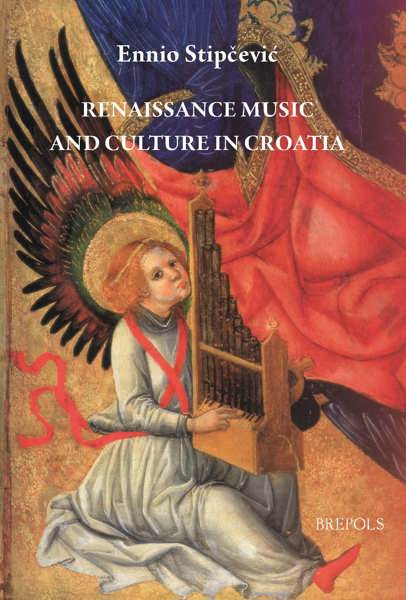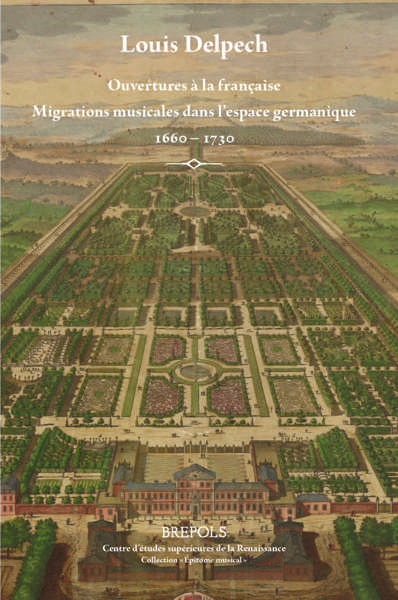
Renaissance Music and Culture in Croatia
Ennio Stipcevic
- Pages: 356 p.
- Size:190 x 290 mm
- Illustrations:37 b/w
- Language(s):English, Italian, Latin
- Publication Year:2016
- € 70,00 EXCL. VAT RETAIL PRICE
- ISBN: 978-2-503-56641-2
- Paperback
- Available
Ennio Stipčević, musicologist, in 1984 became a researcher (now senior scholar) at the Institute for the History of Croatian Music at the Croatian Academy of Sciences and Arts and in 1994 also began teaching at the Zagreb Academy of Music. The ac. year 1996/97 he spent as a Fulbright visiting scholar at the Yale University. His publications, mostly on the Croatian Renaissance and Baroque music, includes monographs on Ivan Lukačić (2007) and Francesco Usper (2008), together with a dozen music editions.
This book is the first more comprehensive effort dedicated to the interdisciplinary study of Renaissance music in Croatia. On the pages of this book the dramatis personae comprise priests and heretics, noblemen and tradesmen, men of learning and illiterate fishermen, ladies from high society and courtesans, printers and scribes, patrons of the arts and their protégés – in other words, people participating in one way or another in cultural and artistic events. In spite of grave political problems during the 15th and 16th centuries (the Turks established their power in the north and eastern regions), the Croatian soil was a theatre of vivid musical life. The variety of cultural influences (most important coming from Italy) has been reflected in some specific phenomena in the Croatian cultural and musical life. Among them are the Catholic liturgy in the native language, the Petrarchan poetry in the Italian language, with which some Dalmatian poets managed to attract the attention of contemporary Italian composers, and finally, the fact that the Croatian coastland was the extreme south-eastern point reached by the widely spreading Netherlandish Renaissance polyphony. This book focuses on identifying, contextualising and presenting this less known European musical heritage to the wider international public.
The book consists of eleven chapters, followed by the rather exhaustive bibliography.
First chapter Ante murale christianitatis offers some basic information on political and cultural context. During the 15th and 16th centuries the Croatian lands, spreading from the Pannonian Plain to the eastern coast of the Adriatic Sea, were shaken by grave political problems. Cornered by the interes of Venice, Hungary and the Ottomans, the Croats found themselves on the borders of confliting worlds.
Second chapter Sources: from manuscript to print gives an overview of music sources mentioned in this book.
In third chapter Education and music reader can learn how was both public and church education organised in some Croatian cities and what was the importance of music in education.
In fourth chapter The church: catholics, reformists, catholic reformation one could find a more important data on a very specific liturgy practise, i.e. the church singing in native language, the so-called „Glagolitic chant“.
Fifth chapter Folk culture and popular culture offfers a close reading of mostly literary sources.
Sixth chapter Ceremonies and devotions gives an anthripological approach to the finds of music performances in the city streets, both caarnival and other secular and church celebrations.
Seventh chapter Music and theatre gives a rich and very interesting documentation, which deserves full attention of international reader.
In eight chapter Music and literature one could read about „multilinguality“ in Croatian written culture. It is shown, for instance, how the Petrarchan poetry in Italian language and written by Dalmatian poets attracted the attention of some contemporary composers.
Ninth chapter Celebri autori deals with the most important composers of the Renaissance music in Croatia, such as Andrea Patrizio „da Cherso“, Giulio Schiavetto from Šibenik and Lambert Courtoys, a Frenchmen active in Dubrovnik.
Chapter tenth, entitled The end of the Renaissance, is devoted entirely to the Istrian composer Francesco Sponga-Usper.
The very last eleventh chapter is written in a literary form of dialogue, summaryzing what was previously said.




